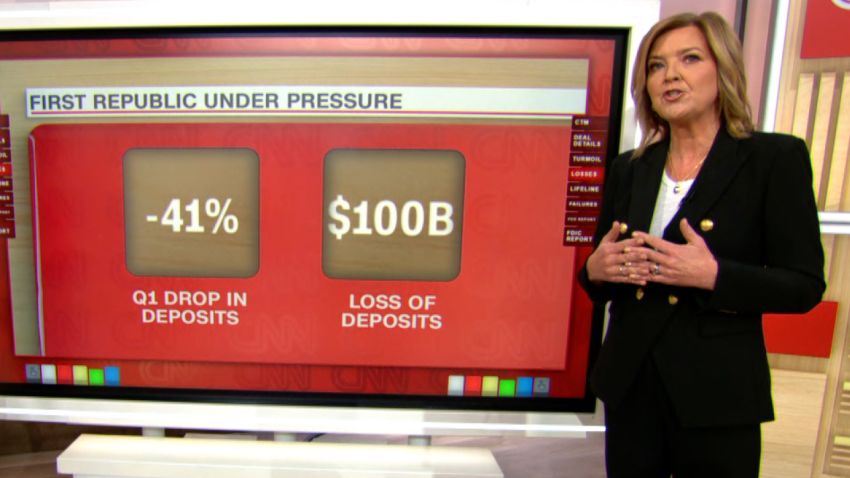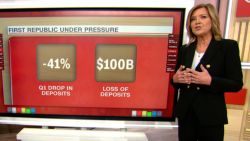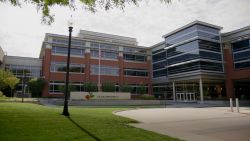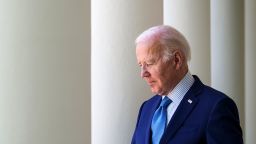JPMorgan Chase is buying most assets of First Republic Bank after the nation’s second-largest bank failure ever, in a deal announced early Monday that protects the deposits of First Republic’s customers.
JPMorgan Chase said it had acquired “the substantial majority of assets” and assumed the deposits, insured and uninsured, of First Republic from the Federal Deposit Insurance Corporation, the independent government agency that insures deposits for bank customers.
“Our government invited us and others to step up, and we did,” said JPMorgan Chase CEO Jamie Dimon. He said the deal is also a good one for his bank’s shareholders, adding to its expected earnings going forward.
Under the deal, the FDIC will cover 80% of any losses incurred on First Republic’s portfolio of single-family residential mortgage loans and commercial loans over the next five to seven years. JPMorgan Chase also will not assume First Republic’s corporate debt, and it will receive $50 billion in financing from the FDIC to complete the deal.
Under terms disclosed by JPMorgan Chase, it will make a $10.6 billion payment to the FDIC, return $25 billion in funds that other banks deposited with First Republic in March in a lifeline negotiated with Treasury at that time, and will eliminate a $5 billion deposit it had made with First Republic. JPMorgan will record a one-time gain of $2.6 billion on its books from the deal, although it expects to spend $2 billion on restructuring through the end of 2024.
Besides being good news for JPMorgan Chase and First Republic’s worried customers, it was also cheered by Treasury Department officlals, who are worried about a loss of confidence in the banking system causing damage to the US economy.
“Treasury is encouraged that this institution was resolved with the least cost to the Deposit Insurance Fund, and in a manner that protected all depositors,” said a Treasury Department spokesperson. “The banking system remains sound and resilient, and Americans should feel confident in the safety of their deposits and the ability of the banking system to fulfill its essential function of providing credit to businesses and families.”
The FDIC took control of the embattled First Republic and then immediately announced the sale. The failure will cost the FDIC about $13 billion. That money will be paid by the nation’s banks, which pay premiums to support the agency. It is less than the $20 billion cost of the failure in March at Silicon Valley Bank, which was a bit smaller than First Republic.
The FDIC conducted an auction among several banks to see which would end up with First Republic’s assets. Those bids were submitted late Sunday afternoon, a source told CNN. Then came hours of waiting for news about which bid was successful.
Health of the regional banking sector
The move represents the latest effort by federal regulators to prop up consumer confidence in the US banking system, which has suffered three major bank failures in the last seven weeks. Silicon Valley Bank and Signature Bank both were taken over by the FDIC last month following runs on those banks by their customers.
The collapse of those banks sparked weeks of speculation about the health of US regional banks, especially those with a largely uninsured deposit base.
Deposits at First Republic will continue to be insured by the FDIC, and “customers do not need to change their banking relationship in order to retain their deposit insurance coverage up to applicable limits,” the agency said in its statement Monday.
“As part of the transaction, First Republic Bank’s 84 offices in eight states will reopen as branches of JPMorgan Chase Bank, today during normal business hours,” it noted.
First Republic, which started operations in 1985 with a single San Francisco branch, is known for catering to wealthy clients in coastal states. It had assets of $229.1 billion as of April 13. As of the end of last year, it was the nation’s 14th-largest bank, according to a ranking by the Federal Reserve. JPMorgan Chase is the largest bank in the United States with total global assets of nearly $4 trillion as of March 31.
First Republic has branches in high-income communities such as Beverly Hills, Brentwood, Santa Monica and Napa Valley, California; in addition to San Francisco, Los Angeles and Silicon Valley. Outside of California, branches are in other high-income communities such as Palm Beach, Florida; Greenwich, Connecticut; Bellevue, Washington; and Jackson, Wyoming. It had about 7,200 employees as of the end of last year.
The bank’s failure comes after its stock plunged more than 97% since the problems at Silicon Valley Bank surfaced in mid-March, worrying investors about the state of the banking sector. Attempts by some larger banks to provide a $30 billion dollar lifeline proved to be insufficient to turn things around at First Republic.
Its final woes kicked off early last week when the bank reported financial results that disclosed it had lost more than half of its deposits during the first quarter, not counting the infusion of cash it received from other banks.
The FDIC’s rules mean that any customers with $250,000 or less in First Republic will have those funds insured by the agency. First Republic reported last week that its uninsured deposits totaled $19.8 billion, not counting $30 billion in uninsured deposits it received from other banks as part of the attempt to keep the bank afloat.
Many of the bank’s customers who withdrew money during the last month were likely above that $250,000 threshold. Uninsured deposits at the bank fell by $100 billion during the course of the first quarter, a period in which total net deposits fell by $102 billion, not including the infusion of $30 billion in deposits from other banks.
The uninsured deposits stood at 68% of its total deposits as of December 31, but only accounted for 27% of its non-bank deposits as of March 31.
In its most recent earnings statement, the bank said insured deposits declined moderately during the quarter and have remained stable from the end of last month through April 21.
Support for the banking system
The infusions of cash into First Republic came after the collapse of Silicon Valley Bank and Signature Bank in mid-March. The cash came from the nation’s largest banks, including JPMorgan Chase (JPM), Bank of America (BAC), Wells Fargo (CBEAX), Citigroup (C) and Truist, which worked together after the intervention by Treasury Secretary Janet Yellen.
The banks agreed to keep First Republic flush, in the hopes it would provide confidence in the nation’s battered banking system. The banks and federal regulators wanted to reduce the possibility that customers of other banks would start withdrawing their cash.
But while the cash allowed First Republic to make it through several weeks relatively unscathed, its Monday quarterly financial report, which disclosed massive withdrawals by the end of March, spurred new concerns about its long-term viability.
Banks never have the full amount of cash on hand to cover all deposits. They instead take in deposits and use the cash to make loans or investments, such as purchasing US Treasuries.
When customers lose confidence in a bank and rush to withdraw their money all at once, in what is known as a “run on the bank,” it can cause even an otherwise profitable bank to fail.
First Republic’s latest earnings report showed it was still profitable in the first quarter: Its net income was $269 million, down 33% from a year earlier. But it was the news about the loss of deposits that worried investors and, eventually, regulators.
While those who had more than $250,000 in their accounts were likely wealthy individuals, most were likely businesses that often need that much cash just to cover daily operating costs.
A company with 100 employees can easily need more than $250,000 just to cover a biweekly payroll. First Republic’s annual report said 63% of its total deposits were from business clients, with the rest from individuals.
Over the past decade, roughly 70 banks have failed, according to FDIC data, though most of those have been smaller regional lenders. But there were no failures in either 2021 or 2022. The three failures since March 10 matches the total number of bank failures in the previous 36 months from March 2020 through February 2023.
Each of the recent failures involved banks with assets of more than $100 billion. The last time there was a failure of a bank with $1 billion in assets was in May 2017, when Guaranty Bank in Milwaukee went under.
And the last time there was a $100 billion bank that failed was Washington Mutual in September 2008, which had $307 billion in assets, which is still the record for a US bank failure.
— CNN’s Matt Egan contributed to this report
























